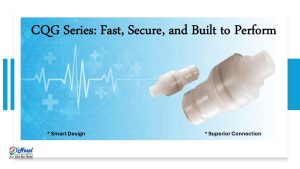Are you interested in learning how to keg your own beer? Kegging your homebrew can save you time and money while providing a convenient way to dispense your beer. This guide will walk you through the basics of obtaining a kegging system, filling your kegs, and serving your kegged beer at home.
Obtaining a Beer Kegging System
To start kegging your own beer, you’ll need a beer-kegging system. You can purchase one from a local homebrew shop or a reputable online brewing supply store. A typical kegging system consists of:
- A keg (the 5-gallon Cornelius or “Corny” keg is the most popular choice)
- A CO2 (carbon dioxide) gas tank
- A pressure regulator
- Two hoses (one for delivering CO2 to the keg, the other for moving beer to your tap)
When starting out, it’s advisable to invest in a complete starter system from a single retailer. After obtaining your kegging system, you will need to refill the CO2 tank at a local beverage or gas supply store.
For any query/doubt must write us at: Sales3@natronequipments.com
Preparing Your Keg
Before using a keg, especially if it has been previously used for soda, it is crucial to thoroughly clean and sterilize it. Here’s how:
- Clean the Keg: Use a suitable cleaning solution to remove any residues.
- Check for Leaks: Pressurize the keg with CO2 and inspect the hose fittings and valves by applying a small amount of soapy water. Look for bubbles indicating leaks.
- Sterilize the Keg: Use a stainless steel-safe sterilizing agent like iodophor.
Must Visit to explore more: https://www.natronequipments.com/beer-industry/Customized-Kegging-Kits
Filling the Keg
When filling the keg with your homebrew, follow these steps:
- Siphon the Beer: Carefully siphon the beer from your fermenter to the keg, avoiding splashing or aeration to prevent oxidation.
- Seal and Pressurize: Once filled, seal the keg with the lid and pressurize it using the CO2 tank.
- Remove Air: Pressurize the keg with CO2, then release the air through the release valve on the lid. Repeat this 4-6 times to ensure all air is replaced with CO2.
Carbonating Your Beer
After filling and sealing your keg, it’s time to carbonate your beer:
- Use a Carbonation Calculator: Input the desired volumes of CO2 (a recommended starting point is 2.4), the refrigerator temperature, and the beer volume to determine the correct pressure.
- Set the CO2 Regulator: If you don’t have a carbonation calculator, start with a pressure of 10 psi and adjust as needed.
- Connect and Refrigerate: Set the CO2 tank regulator to the desired pressure, connect it to the keg, and place the keg in the refrigerator.
Serving Your Kegged Beer
Within a day or two, your keg will begin carbonating and will reach full carbonation within a week. Here’s how to enjoy your kegged homebrew:
- Pouring: Pour the beer gently along the side of the glass and fully open the tap to avoid excessive foam.
- Adjusting Carbonation: If the carbonation is too strong, decrease the CO2 pressure slightly. If the beer lacks carbonation, increase the pressure slightly.
For any query/doubt must write us at: Sales3@natronequipments.com
Conclusion
Now, you’re fully prepared to enjoy your kegged homebrew! Gather some friends and savor the delightful taste of fresh beer straight from the tap. Kegging your own beer not only enhances your brewing experience but also offers a convenient and efficient way to enjoy your craft.
At NESPL, we pride ourselves on being one of the best and most experienced suppliers of equipment and spare parts across various industries. Partner with us to ensure you have the best tools for your brewing needs, and experience the joy of kegging your own craft beer with ease and confidence. Cheers to better brewing and happier sipping!
https://www.natronequipments.com/beer-industry
By following this guide, you’ll not only improve your brewing skills but also enjoy the numerous benefits that come with kegging your own beer. Happy brewing!







